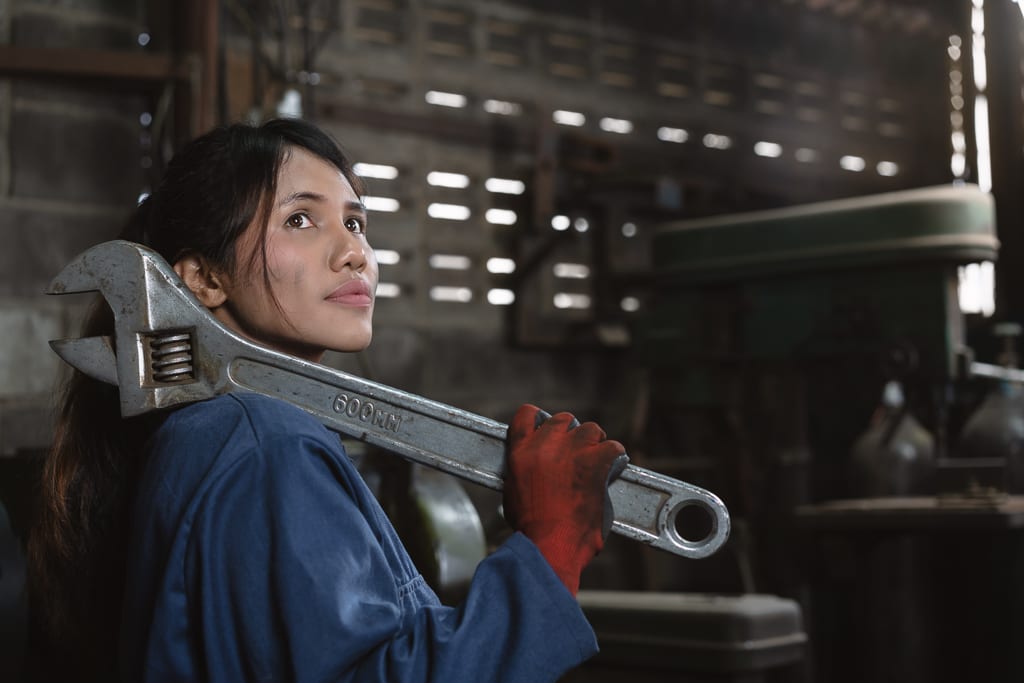What Are the Fastest Growing Occupations in the US?
The US job market is currently booming. Millions of jobs have been created, and some occupations are expected to keep growing for years to come. You...
5 min read
 Amy Lawrence
:
Mar 4, 2020 9:00:00 PM
Amy Lawrence
:
Mar 4, 2020 9:00:00 PM

“We need to revive American manufacturing.” Heartfelt speeches with this message have been said many times across both sides of the political aisle. Compared to rivals in China, India, Germany and throughout the world, the U.S.’s manufacturing industry seems to trail.
However, that understanding misses out on a key point: American manufacturing does have a ton of jobs available — 2 million, in fact. A study from research firm Deloitte and the Manufacturing Institute showed that U.S. manufacturing will need 3.5 million new workers in the next 10 years, and around 2 million of those jobs probably won’t get filled.
The report blames the looming shortage on a skills gap and other worker-based problems, but there’s an even bigger problem with the way manufacturers attempt to recruit. They aren’t going after women job seekers often enough. They also aren’t taking steps to make manufacturing jobs a friendly environment for women, revealing some badly needed cultural changes.
Seeking out women recruits and making manufacturing workplaces less hostile to women can help close the massive labor gap the industry worries about. Women who want to find high-paying careers without a bachelor’s degree can look for employment training to get them onto the factory floors, where many opportunities could be waiting for them.
You can point to culture as a big reason why women traditionally didn’t consider working in manufacturing a decade or two ago. Even though there have always been women in U.S. manufacturing (who can forget the iconic “Rosie the Riveter” image?), stereotypes about factory work being “man’s work” stuck around for generations.
That’s all changing these days, according to surveys from companies like Deloitte. Their research found that from 2015 to 2017:
While these findings are all good signs, the workplace gap still has a ways to go. The Deloitte study also found that even though women held about 47% of U.S. jobs overall in 2016, they were only 29% of the workforce in manufacturing.
To attract more females to their job positions, factories and manufacturers need to make a number of positive changes.
Research shows that many women think their careers expect too much of them from the moment they are hired. Even though men typically apply to a job when they meet 60% of the listed qualifications, women tend to apply only when they meet 100% of them.
The idea that someone will know everything there is to know about a job right when they start is ludicrous. Job skills are built and developed by working. While some job training programs can make you extremely prepared, no skillset translates to all jobs equally.
Instead, most jobs teach you how to work more effectively as time goes on. Gaining skills and learning on-the-job prepares workers for promotion. It also makes them highly qualified to work the job they currently have, encouraging them to stick around.
Manufacturers can make job skills training more structured by having training programs available during work hours. Women can learn to do their job better or pick up skills from other parts of the manufacturing plant.
When a skill can’t be taught on-the-job, employers should be willing to pay for the worker’s education. That way, they have smarter, more professional workers who are more than 100% qualified to do their job — something no recruiter should expect on day one.
No woman wants to feel like the only female on their shift. They want to be able to look around them and see other women, especially when they look at their bosses and higher ups.
This may seem to present a “chicken and egg” question: how can manufacturers make women want to work at a place with very few other women? The answer is to connect new recruits with women who already work there.
Jennifer F. Scanlon, a former CEO at building materials manufacturer USG Corp, helped start the Women in Manufacturing (WiM) group to achieve this goal. WiM connects peers, offers unique training programs, and helps foster mentoring between senior level employees and low-level recruits.
“I’ve had some great bosses who have encouraged me to push myself and take on new opportunities,” says former female plant manager at USG Ann Franzen. “But it was challenging to be the only woman in my role and not have female peers to turn to for guidance. That’s part of why I’m so passionate about our WiM group.”
Scanlon argues that taking steps to encourage diversity and retain female employees better prepared her company for an uncertain future.
The traditional male/female divide in homes came partially from unfair expectations of workers. Manufacturing jobs could pay for a home and put several kids through college, but the man of the house would have to work long hours, sometimes late into the night or on weekends.
The storied “third shift” is a common part of factory life, where the machines are supposed to never stop running. But modern workers — both male and female — expect a healthier work/life balance out of their career.
In response, “many small companies are focusing on benefits and perks that are a bit more manageable financially but also represent their culture and accommodate their employees’ lifestyles,” writes Gallup’s Women in America report. “They are offering employees the flexibility, autonomy and development they want and establishing work environments that feel less like traditional, inflexible corporate cultures.”
These job perks include being able to accommodate shift swaps when family events come up and actual maternity leave with benefits that don’t punish working moms.
Workplaces that adopt these perks can have an easier time appealing to female recruits. One recent Ironworkers Union ad for employers read: ““Want great maternity leave? Become an Ironworker.”
Companies in all industries have made huge efforts to crack down on female employee harassment in the past few years. While these new policies are important for holding people accountable, they don’t target the root of the problem: the attitudes of employees and managers at all levels of the company.
“Sexual harassment policies deal with egregious offenses. They don’t create culture,” writes a recent Gallup report. “Leaders and managers do.”
Top-level executives have to hammer home how much of a negative effect one uncomfortable moment or one sexist joke can have on the entire female workforce. Small incidents lead up towards the bigger ones, like when an employee is harassed by their boss or they see a less-qualified male co-worker get promoted past them. When women see these effects on the big and small scale, it makes them want to change jobs.
According to Dana Burch of Industrial Marketer Magazine, “If a company doesn’t change its culture, it can recruit all the women it wants but won’t be able to retain them.”
True culture reform happens when leaders set a positive example and encourage employees to stand up against bullying, harassment, and sexist behavior. Leadership should also encourage the development of employees, celebrating their successes and promotions. Overall, expectations have to be fair and reasonable, otherwise double standards will continue to undermine morale.
More effort spent appealing to women can pay off for the manufacturing industry. It will definitely pay off for the women willing to get the initial job training needed to enter a manufacturing career.
With just a few years of training, they can start a job with pay that can provide for their family. They may also be able to look forward to advancement opportunities, meaning they could some day be mentoring a new generation of female recruits of their own.

The US job market is currently booming. Millions of jobs have been created, and some occupations are expected to keep growing for years to come. You...

There’s no mistaking it: California and the U.S. as a whole is getting hotter. That heat will cause more people than ever to turn to their air...

Between months spent in boot camp, years of overseas deployment, and sometimes over a decade of service, it’s easy to say that — for many people —...